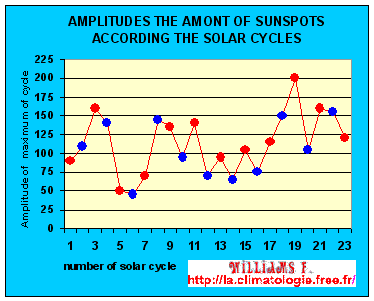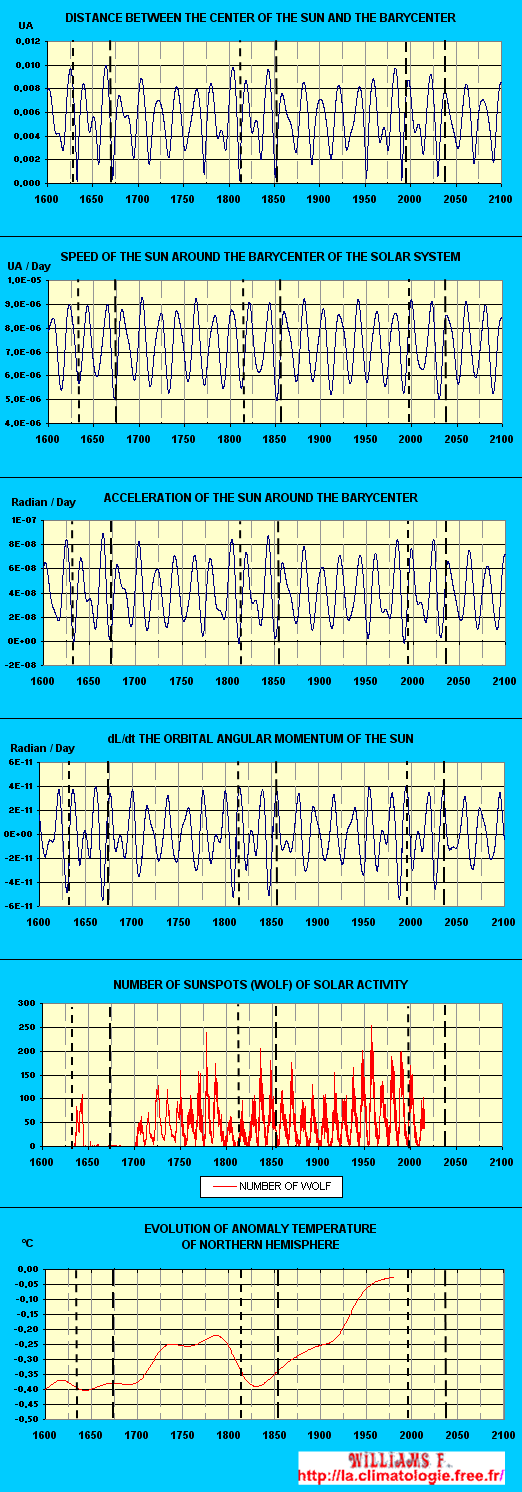3st PART
Violations of the GO law happen near a period when the orbital motion of the Sun around the center of gravity is retrograde and when the orbital angular momentum of the Sun decreases a lot and quickly. At those times there is about an alignment of Jupiter-Sun-Saturn-Uranus-Neptune therefore the barycenter is near the center of the Sun and then a reverse alignment occurs with Sun-Jupiter-Saturn-Uranus-Neptune after nearly 6 years more or less one year. So a rapid change in the distance between the Sun and the barycenter. For when Saturn-Uranus-Neptune are on the same side of the Sun the shortest orbital period of Jupiter modifies very quickly the distance between the Sun and the barycenter. Below you have the position of the gaseous planets at two given points during solar cycles that have violated the law of GO. For the first two where the date is lower than the beginning of the numbering of solar cycles, the GO law must have been violated but we can not verify it. As we see the alignment of gaseous planets are all on the same side and between 5 and 7 years after, Jupiter is on the other side of the Sun and the other gas planets are on the opposite side of Jupiter.
Position of the planets in 1625 and 1632
is when these
Position of the planets in 1665 and
1672 is when these
Position of the planets in 1805 and
1811 is when these
Position of the planets in 1845
and 1851 is when these
Position of the planets in 1985
and 1990 is when these
Position of the planets in 2023 and
2030 is when these This alignment of gas planets happens every 179,60 years. This is why the different orbits of the Sun and of the barycenter of the solar system reproduce sequentially with a period of 179,60 years. This must be the cause of of the Suess cycle or Vries as the minimum of the solar cycle falls when the orbital angular momentum of the Sun is changing rapidly each time when solar activity and temperatures weakened either at minimums of Oort, Wolf, Spörer, Maunder and Dalton. In the figure below we see the variation
of the distance barycenter-Sun, the speed of the sun around
the barycenter, the acceleration of the sun around the barycenter,
the rate of change of the orbital angular momentum of the
Sun. the number of Wolf sunspot and the temperature anomalies
in the northern hemisphere. Two spaced vertical dashes of
approximately 43 years appear every 179 years. The gap between
the two close enough vertical dashes is about 43 years or
the period of conjunction of Saturn and Uranus. As can be seen, the two dashes who return every 179 years or when the law of GO is not followed and therefore that the odd cycle is less active than the even cycle preceding on the contrary to what it should be. Each of these vertical dashes couples are close to a time when solar activity and temperature of the northern hemisphere are low or decrease.
Periods, 1632, 1811 and 1990 are when
the orbital motion of the Sun is
|














